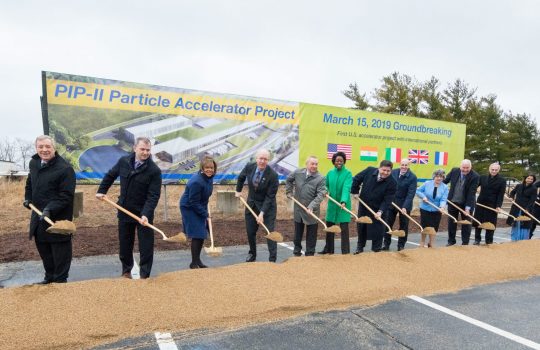Fermilab, partners break ground on particle accelerator to study ghostly particles, new forces
From University of Chicago news, March 15, 2019: Fermilab officially broke ground March 15 on a major new particle accelerator project that will power cutting-edge physics experiments for many decades to come. The new 700-foot-long linear accelerator, part of the laboratory’s Proton Improvement Plan II, will be the first accelerator project built in the United States with significant contributions from international partners.


